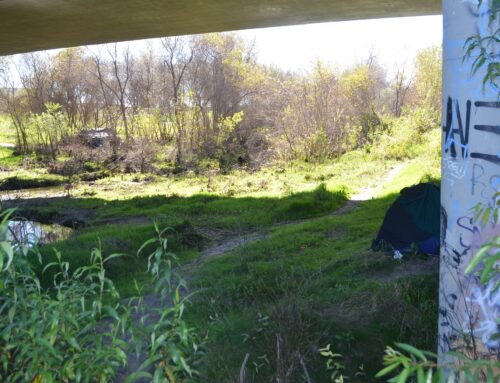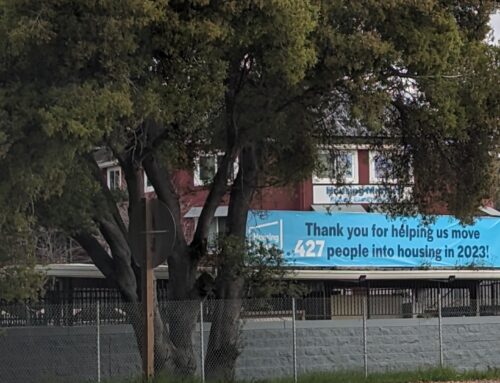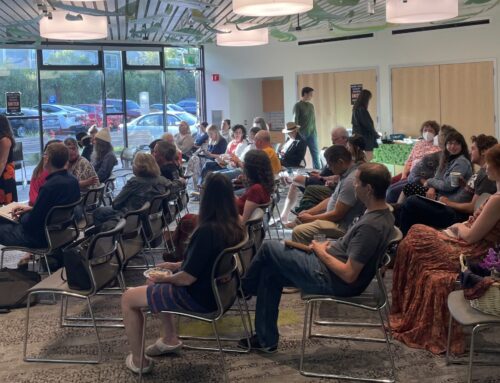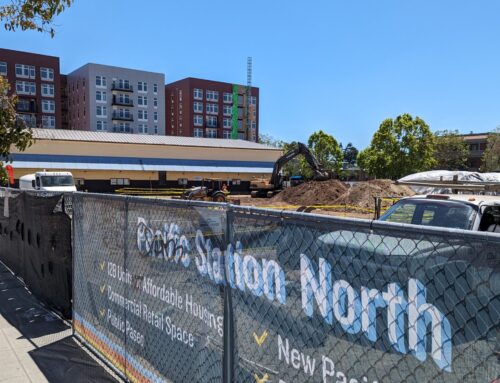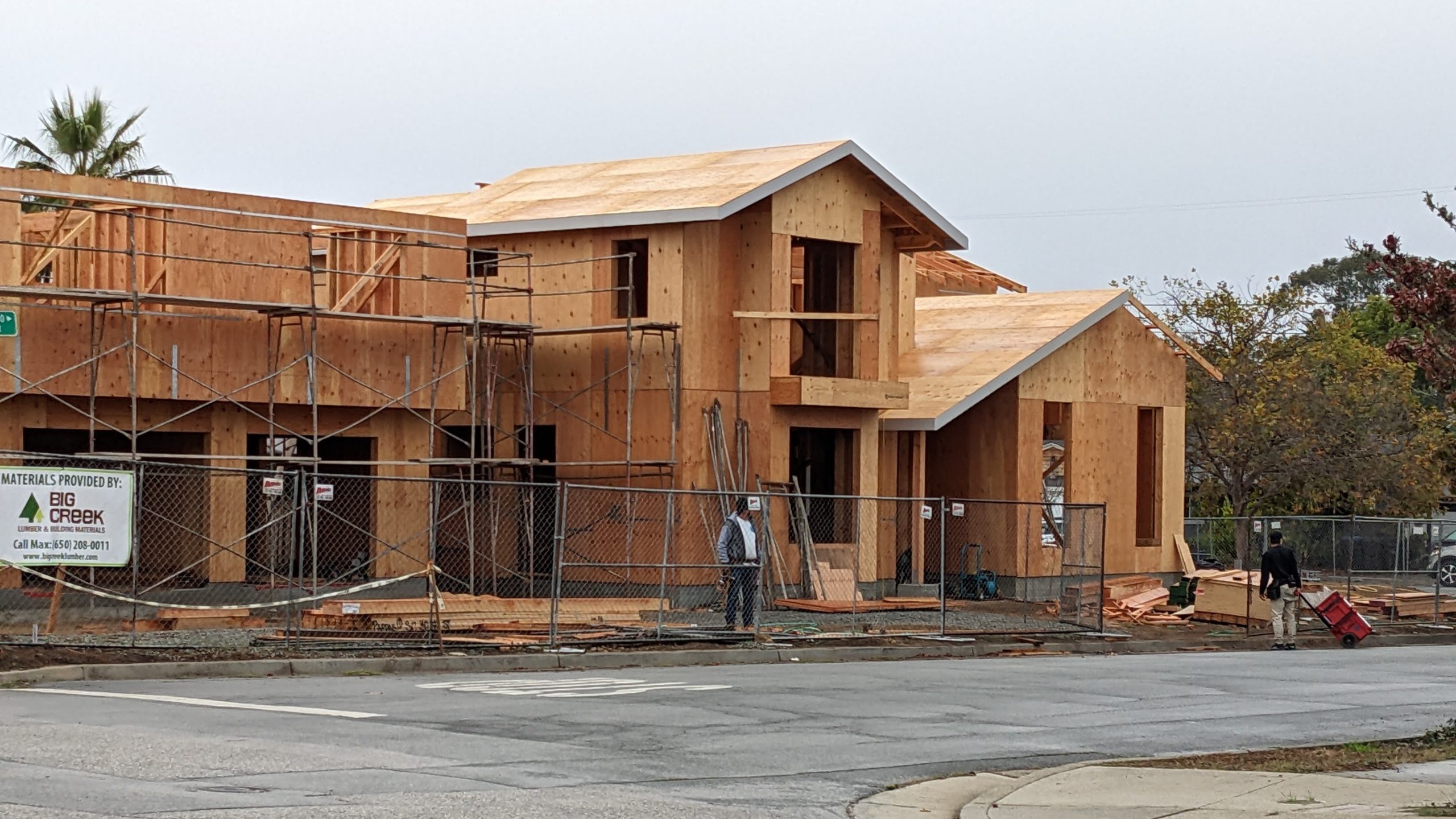
Workers arrive at a home under construction on Bay and Liberty streets in Santa Cruz this week. (Stephen Baxter — Santa Cruz Local)
SANTA CRUZ >> Santa Cruz County’s goal for new housing over the next eight years has more than quadrupled, according to a plan approved by regional leaders.
Wednesday night, the board of the Association of Monterey Bay Area Governments, known as AMBAG, adopted the region’s sixth Regional Housing Needs Allocation Plan.
Requirements of the Regional Housing Needs Allocation, or RHNA, are set roughly every eight years for the Monterey Bay region. State leaders set home building requirements to try to address the state’s housing shortage.
When areas do not make adequate progress on their housing production goals, state law allows streamlined approval of some housing projects. City and county leaders then have limited power to change projects.
The plan for housing development from June 30, 2023 to Dec. 15, 2031 includes permit targets by jurisdiction identical to those in a draft plan released in April:
Capitola
- 1,336 new homes are targeted to be built. More than half of the new homes would be required to be affordable for people with “low” or “very low” incomes. Income limits are set by the state yearly. The new housing construction goal is more than nine times Capitola’s current goal.
- As of late 2021, Capitola was 90 units short of the state’s target of homes to be permitted by the end of 2023.
Watsonville
- 2,053 new homes are targeted, including 469 affordable units for people with “low” or “very low” incomes. That’s nearly three times Watsonville’s current goal, which the city has not met.
- As of late 2021, Watsonville city staff was 398 units short of the state’s target of homes to be permitted by the end of 2023.
Scotts Valley
- 1,220 new homes are targeted, including 649 affordable homes for people with “low” or “very low” incomes. That goal is nearly nine times Scotts Valley’s current goal, which the city has not met.
- As of late 2021, Scotts Valley city staff was 64 units short of the state’s target of homes to be permitted by the end of 2023.
City of Santa Cruz
- 3,736 new homes are targeted, including about 1,400 affordable homes for people with “low” or “very low” incomes. That goal is five times Santa Cruz’s current goal.
- As of late 2021, Santa Cruz city staff was 123 units short of the state’s target of homes to be permitted by the end of 2023.
Unincorporated areas of Santa Cruz County
- 4,634 new homes are targeted, including 1,492 affordable units for people with “very low” incomes. Unincorporated Santa Cruz County includes the San Lorenzo Valley, the North Coast, Live Oak, Aptos, La Selva Beach, Freedom and other areas. That goal is about three times the area’s current goal, which has not been met.
- As of late 2021, Santa Cruz County staff was 602 units short of the state’s target of homes to be permitted by the end of 2023.
Scotts Valley, Capitola leaders object
During Wednesday night’s meeting, Scotts Valley City Councilmember Derek Timm cast the sole vote against adopting the housing targets plan. Representatives from Greenfield and Sand City, both of which appealed the draft plan, did not attend the meeting. AMBAG rejected those cities’ appeals in September.
In an interview after the meeting, Timm said that the method to allocate the housing units across the region, developed in January, places an unfair burden on Santa Cruz County. “Monterey County essentially shifted over 2,000 of the units out of its county and into Santa Cruz County,” he said.
Under the previous plan developed in 2012, Santa Cruz County was allocated 29% of the region’s 10,430 housing units. Under the current plan, Santa Cruz County is responsible for 39% of 33,274 total units. Scotts Valley’s allocation rose from 1.3% of the region’s units to 3.7%.
Those changes are due to a shift in the way the Association of Monterey Bay Area Governments allocates the region’s units. The previous plan divided the region’s housing goal according to the regional distribution of jobs in 2015, predictions of future job growth and predictions of future housing growth.
The new plan includes additional factors that include transit accessibility, resilience to future climate change, and concentration of low-income and non-white communities.
Timm said he was skeptical that Scotts Valley, which hasn’t yet met its goals for the previous housing cycle, will be able to meet the new targets. “Our city is only 4.6 square miles,” he said. “If we were to accomplish these housing goals we’d have to increase our city size by about 26% over eight years.”
Capitola Mayor Sam Storey also objected to the plan. In a May letter to the association board of directors, Storey wrote that the formula used to allocate the region’s units unfairly burdens densely-populated cities.
“Capitola believes that not including land area adequate for development makes the current formulas ineffective, inequitable and illogical,” Storey wrote. Capitola did not submit a formal appeal. In the Wednesday meeting, Capitola City Councilmember Kristen Brown voted to approve the plan.
Related stories
- Home construction goals set to quadruple in Santa Cruz County — May 13, 2022
- State aims to triple housing production in Santa Cruz County — Sept. 3, 2021
Questions or comments? Email [email protected]. Santa Cruz Local is funded by members, major donors, sponsors and grants for the general support of our newsroom. Our news judgments are made independently and not on the basis of donor support. Learn more about Santa Cruz Local and how it is funded.
Santa Cruz Local’s news is free. We believe that high-quality local news is crucial to democracy. We depend on locals like you to make a meaningful contribution so everyone can access our news. Learn about membership.
Jesse Kathan is a staff reporter for Santa Cruz Local through the California Local News Fellowship. They hold a master's degree in science communications from UC Santa Cruz.


